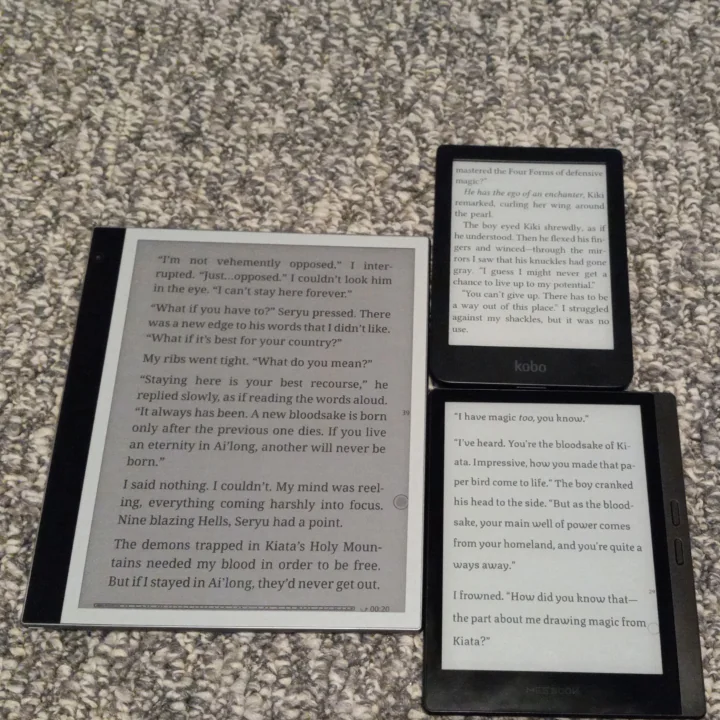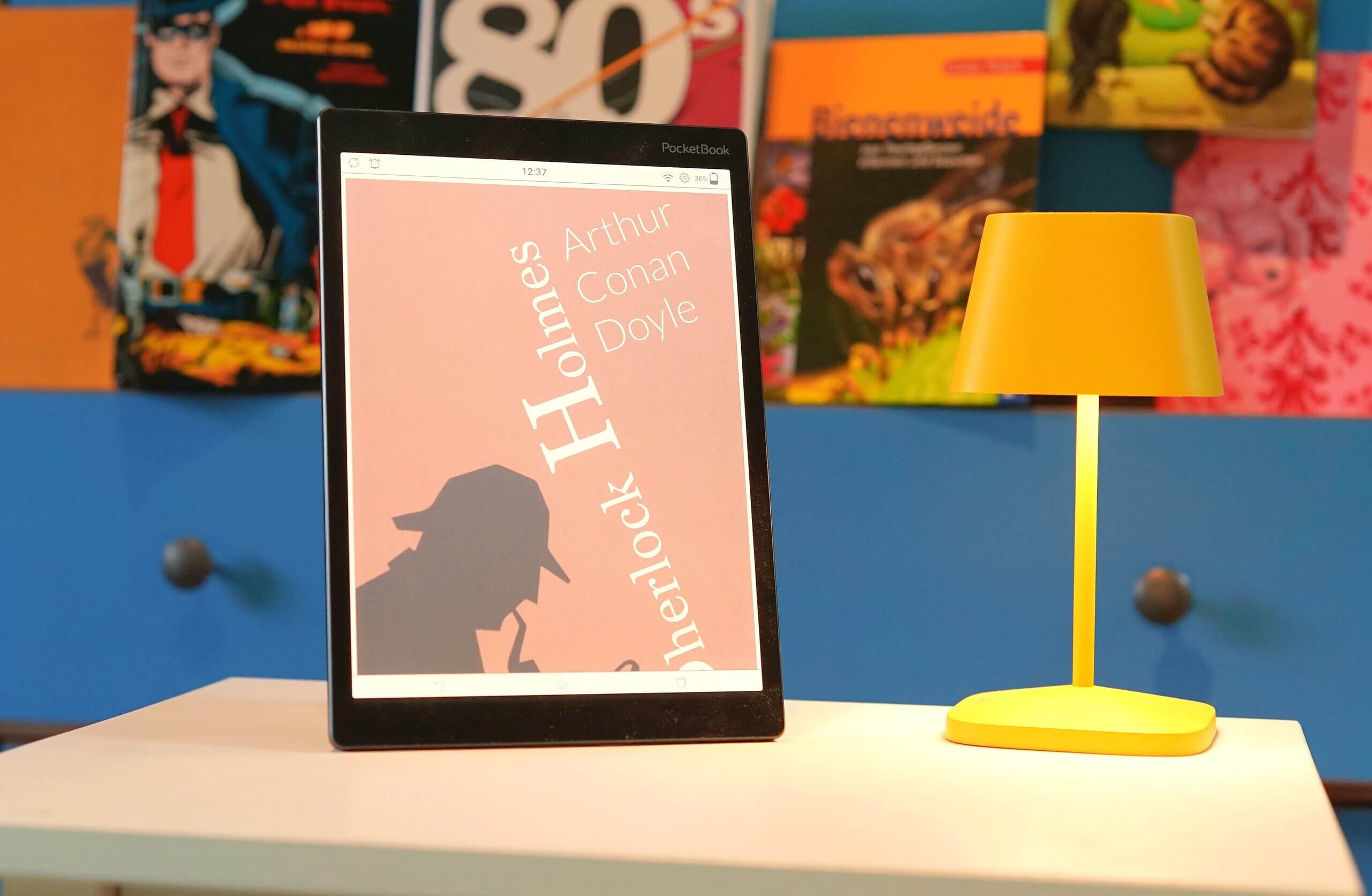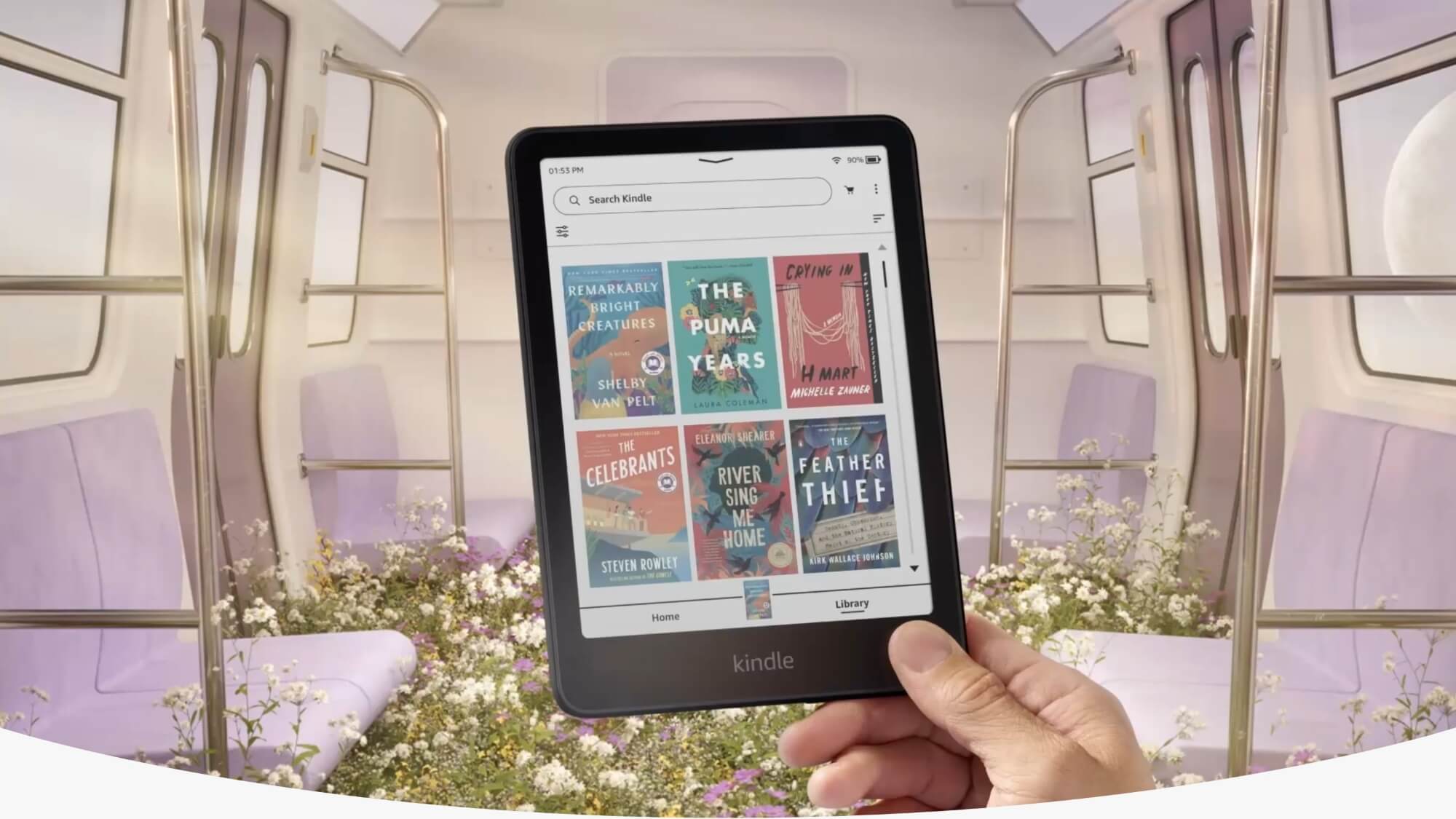Color E INK has been around for over a decade, and early on, few companies took the risks of releasing consumer-grade e-book readers. The technology has matured, and everyone seems to focus on Kaleido 3 and Gallery 3 e-paper. Amazon, Kobo, and Remarkable are three of the largest companies that have embraced color e-paper in the past year. Some of the largest Chinese companies, such as Onyx Boox, Meebook, Hyread, iReader, and iFlytek, focus on color almost exclusively. Customer are split, some like color content on their devices and believe the shopping experience on-device is better, showing cover art and an e-book library is accentuated. However, black and white e-paper has been around for a long time and has matured. Reading an e-book in black and white often provides a better experience.
The problems with color e-paper
Color E INK often suffers from looking washed out. E INK technology fundamentally differs from the millions of colors an iPad or smartphone can display. Kaleido 3 can only display 4096 colors and caps out at 150 PPI. Gallery 3, which is hardly used in the industry, can display 50,000 colors with 300 PPI, but the tech suffers from latency problems.
E INK has invested over 100 million USD in developing modern color e-paper. They did this because once Amazon and Kobo (their largest customers) start to adopt color e-paper, the sheer number of orders will make up for the research and development.
One thing that is very notable about color e-paper is the stack. Some companies keep the color e-paper in the middle of the stack, and others at the top. Examples of a stack include the e-paper layer, plastic protecting the e-paper layer, touchscreen, the front-light and color temperature gel layers, color filter array, and often a layer of glass. That is a lot of different layers between your eyes and the e-paper. The color starts to diffuse with so many layers, so it looks washed out.
One of the downsides of color e-paper is the reading experience when it comes to the typical e-book. You will notice if you have seen side-by-side comparisons between a dedicated black e-reader, an e-reader, and a color e-reader with the same title. The color of the e-reader screen looks darker. The color filter array mixes colors to provide a grey background and black text, which often doesn’t do a tremendous job. A dedicated black and white e-reader has a pure grey background and black text.
Gallery 3 suffers from page-turn and overall device responsiveness. This is because Gallery 3 is based on Advanced Color E-paper, which was initially developed for digital signage. Digital signage often has the same static image and doesn’t change. E INK tried to repurpose the technology for e-readers and e-notes and has made small iterations every year to increase responsiveness, but it is still not ready for prime time. This is evident in the Bigme Galy, Remarkable Paper Pro, and the upcoming Hyread V, the only devices used.
The videos below really showcase the duplicate content on both screens. Devices include the Bigme Hibreak BW vs. Hibreak Color and the Kindle Colorsoft vs. a black-and-white Kindle.
Is there a future in color e-paper?
E-readers geared towards consumers are not in the best place right now. Customers are used to fonts looking amazing, and the reading experience being world-class. Current color e-paper does not accomplish this goal and creates many problems. Look at the yellow-bar saga, with the Kindle Colorsoft being the most prominent. Until E INK can release Kaleido 4, which should boost the resolution to 300 PPI, KL is not the best for anyone other than casual readers.
Color e-paper shines with e-notebooks like the Remarkable Paper Pro, Fujitsu Quaderno A4, and Boox models. Editing PDF files on a device with a 2-4 week battery life is game-changing. Highlighting text in color, signing documents, freehand drawing, or taking notes is better on a color screen than a black-and-white one. Often, devices let you draw in 8 to 16 colors, whereas full-color comics, magazines, and PDF files can display 4000 colors on Kaleido 3 and 50,000 colors on Gallery 3.
Wrap Up
Color e-readers suit casual readers who might buy and read several books a month. It is easier for cover art on the Kobo and Amazon stores to catch your eye and make an impulse purchase. Reading is great; anything that gets people reading more is good. The Kobo Clara Color and Kindle Color Soft are likely the best two consumer-grade color e-readers. Power readers read many books monthly and are likely better suited for a traditional black and white e-paper device.
E-notebooks get the most value from color e-paper, whether Kaleido 3 or Gallery 3. They primarily focus on reading image-heavy content, such as comics, magazines, newspapers, textbooks, and PDF files. The large 10.3—to 13.3-inch screens are often the standard for providing the best reading and drawing experience. However, they are often more expensive than their black-and-white counterparts.
Ultimately, I do not think color e-paper is ready to compete against the smartphone in our pockets or tablets we already own. More people read on these devices than on a dedicated e-reader or e-notebook. Most of my friend group just read print books and love to loan each other books they like, such as graphic novels or DND rule books.
Michael Kozlowski is the editor-in-chief at Good e-Reader and has written about audiobooks and e-readers for the past fifteen years. Newspapers and websites such as the CBC, CNET, Engadget, Huffington Post and the New York Times have picked up his articles. He Lives in Vancouver, British Columbia, Canada.



